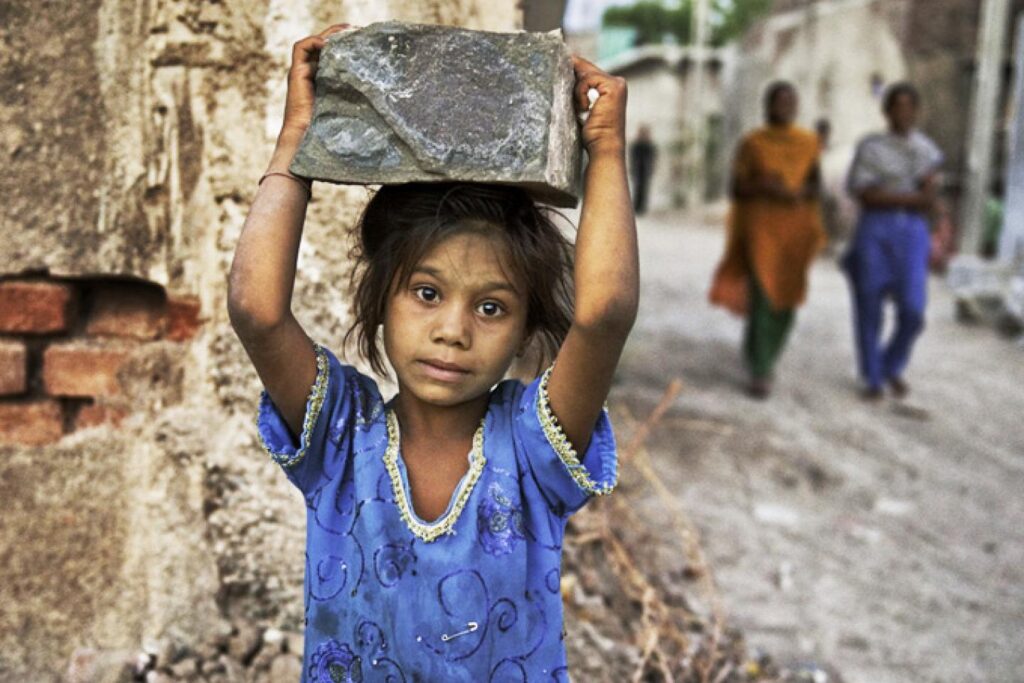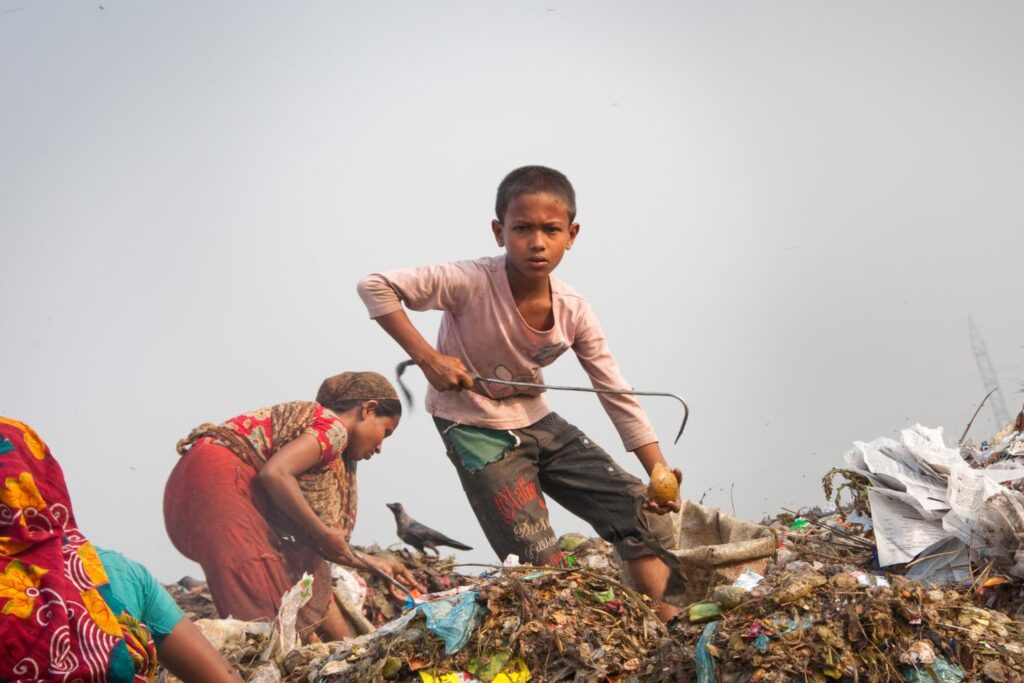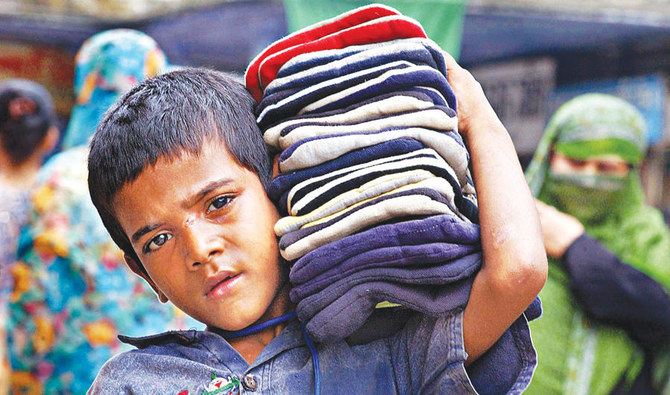Despite the annual observance of Child Labour Day on June 12th, there remains a pressing need for concerted efforts to protect vulnerable children from this pervasive threat.
By M Ahmad
Child labour is a grave menace that continues to persist in Jammu and Kashmir, posing a significant threat to the well-being and future prospects of countless children. Despite legal prohibitions and international conventions against child labour, many children in the region are subjected to exploitative and hazardous working conditions. They are often engaged in activities such as carpet weaving, brick kilns, agriculture, and domestic work. These children are deprived of their fundamental rights, including access to education, healthcare, and a nurturing environment essential for their overall development. Exploitation of Innocence
Causes and Consequences of Child Labour
The prevalence of child labour in Jammu and Kashmir can be attributed to various factors. Poverty, lack of awareness, and limited economic opportunities are some of the underlying causes that force families to push their children into the workforce.

Child labour is a pervasive issue that robs children of their childhood, potential, and dignity while impeding their physical and mental development. It encompasses work that poses mental, physical, social, or moral dangers, putting children at risk. The consequences of child labour extend beyond the workplace, hindering their access to education by forcing them to abandon school prematurely or juggle an arduous workload alongside their studies. Despite being entitled to the same human rights as adults, children lack the knowledge, experience, and physical maturity to navigate an adult world, thus necessitating special safeguards due to their age. Such safeguards aim to shield them from economic exploitation and hazardous work that could compromise their health, morals, and overall growth.
Global Magnitude of Child Labour
Alarming global estimates reveal a distressing surge in child labour, with approximately 160 million children worldwide falling victim to this plight—an increase of 8.4 million over the past four years. Among this staggering number, 63 million are girls and 97 million are boys, collectively representing almost one-tenth of all children globally. It is disheartening to note that boys outnumber girls in child labour by 34 million, with 11.2% of all boys affected compared to 7.8% of all girls.
A child’s hands are too precious to be burdened with work; they should be grasping a powerful pencil, symbolizing education and a brighter future for all.
While child labour predominantly plagues low-income countries, it is essential to acknowledge that middle-income countries actually bear a higher burden in terms of absolute numbers. Lower-middle-income countries host 9% of all children engaged in child labour, while upper-middle-income countries account for 7%. In fact, statistics on child labour in each national income grouping indicate that a significant majority—84 million children, comprising 56% of the total child labour population—reside in middle-income countries. Shockingly, an additional 2 million children endure this injustice even in high-income countries.
Child Labour in India
Within the context of India, estimates from the International Labour Organisation (ILO) suggest that approximately 10.1 million children aged 5 to 14 are involved in various forms of work. Furthermore, the country grapples with an alarming number of out-of-school children, reaching over 42.7 million.
Consequences and Urgency for Action
The prevalence of child labour and the sheer magnitude of affected children highlight the urgent need for concerted efforts and comprehensive measures to eradicate this grave violation of children’s rights.
Child labour inflicts severe dangers and disadvantages upon the lives of children. It exposes them to extreme physical and mental harm, subjecting them to significant emotional difficulties that can even lead to death. Children engaged in labour are deprived of education and healthcare, thereby impeding their fundamental rights and jeopardizing their future prospects.

The implications of allowing child labour to persist are far-reaching, as the affected children are an integral part of our present and future communities. Failing to address this issue now and prepare these children for positive participation in society will render our communities vulnerable. Consequently, it is imperative that we take decisive action to eliminate child labour and equip these children to contribute meaningfully to our communities in the future.
Strategies for Combating Child Labour
The problem of child labour remains a formidable challenge for nations worldwide. While the government has implemented various proactive measures to combat this issue, given its magnitude and the fact that it is intricately linked to poverty and illiteracy, it requires collective efforts from all sections of society to make a substantial impact.
Implementing laws and regulations that prohibit child exploitation and safeguard workers’ rights is crucial. The Child Labour (Prohibition and Regulation) Act of 1986 defines a “child” as someone who has not yet reached their fourteenth year. These laws help prevent the exploitation of children and ensure that they work under safe conditions. Equally important is the enforcement of these laws and regulations, which entails imposing fines or even closing down businesses and employers found to be exploiting children.

Raising public awareness about the issue is also key in curbing child labour. When people are informed about the problem, they are more likely to support legislation and regulations that prohibit child exploitation. They can also make conscious choices as consumers by purchasing products from companies that do not engage in child labour. Numerous campaigns are dedicated to stopping child labour, aiming to raise public awareness and exert pressure on companies and governments to take stronger actions.
Governments must take proactive steps to address this problem by vigorously enforcing legislative provisions while simultaneously implementing rehabilitative measures. State governments, as the appropriate implementing authorities, should conduct regular inspections and raids to identify violations. Since poverty lies at the root of this problem, enforcement alone will not suffice; the government should prioritize the rehabilitation of these children and strive to improve the economic conditions of their families.
Leave a Reply